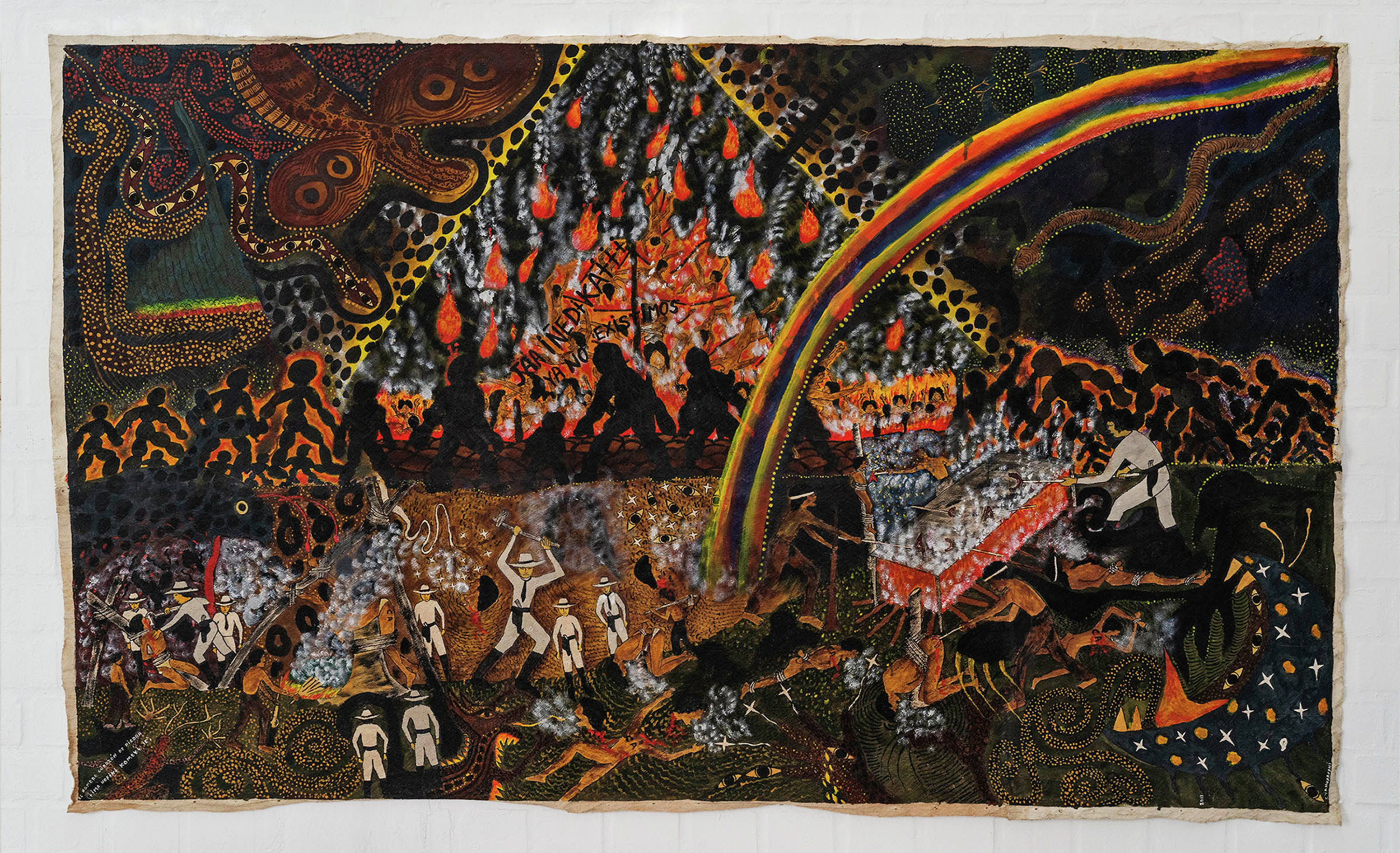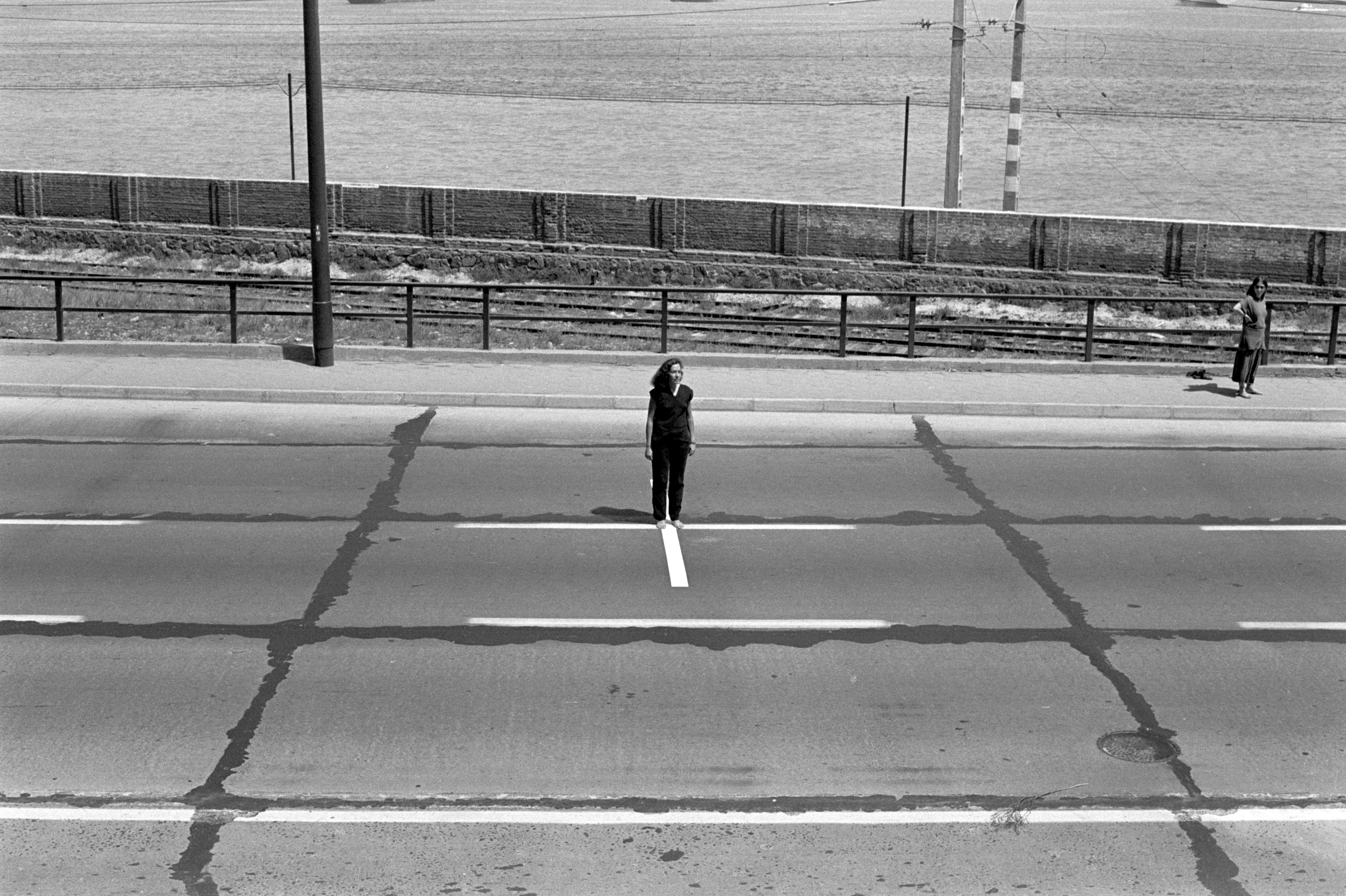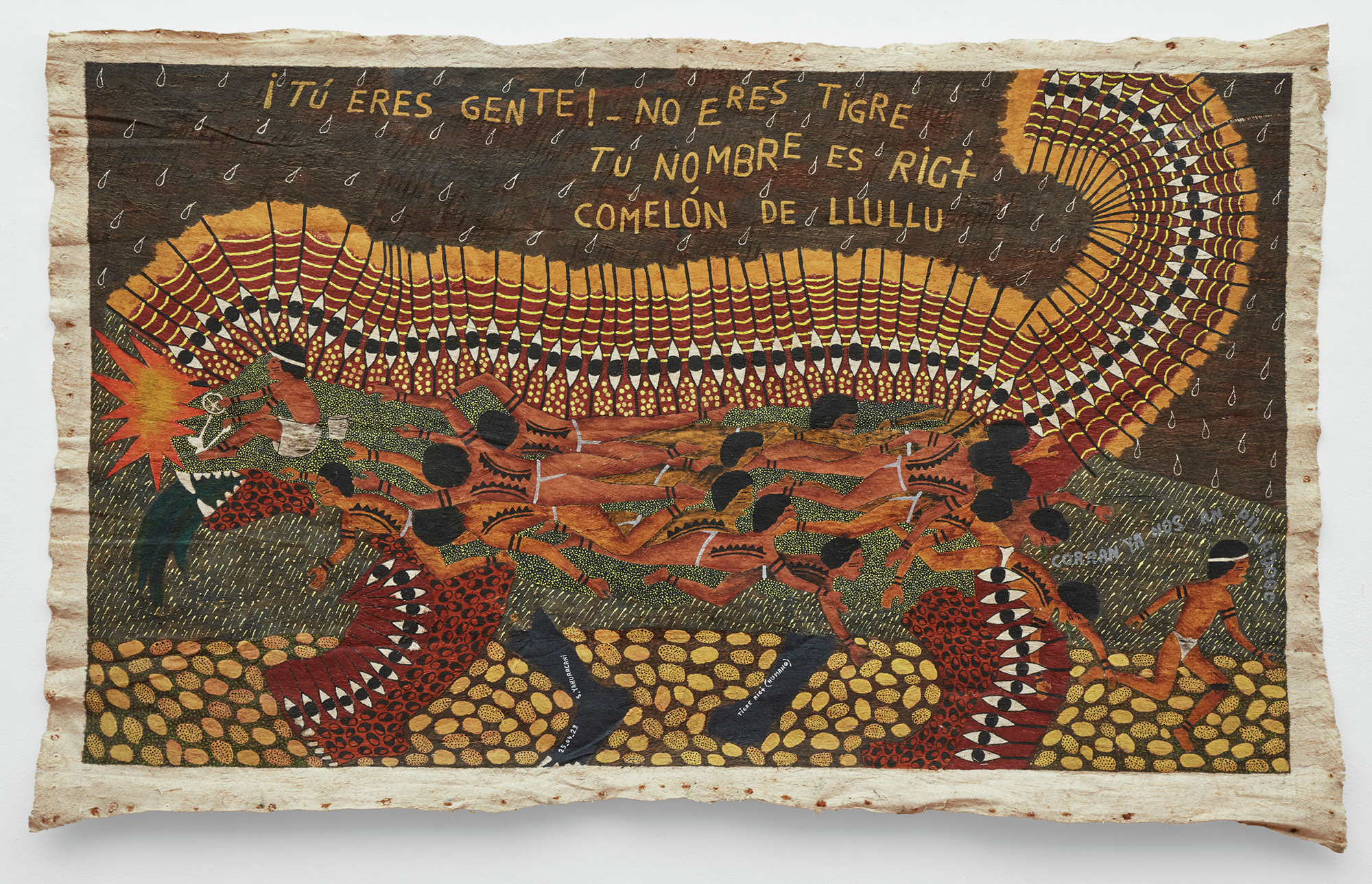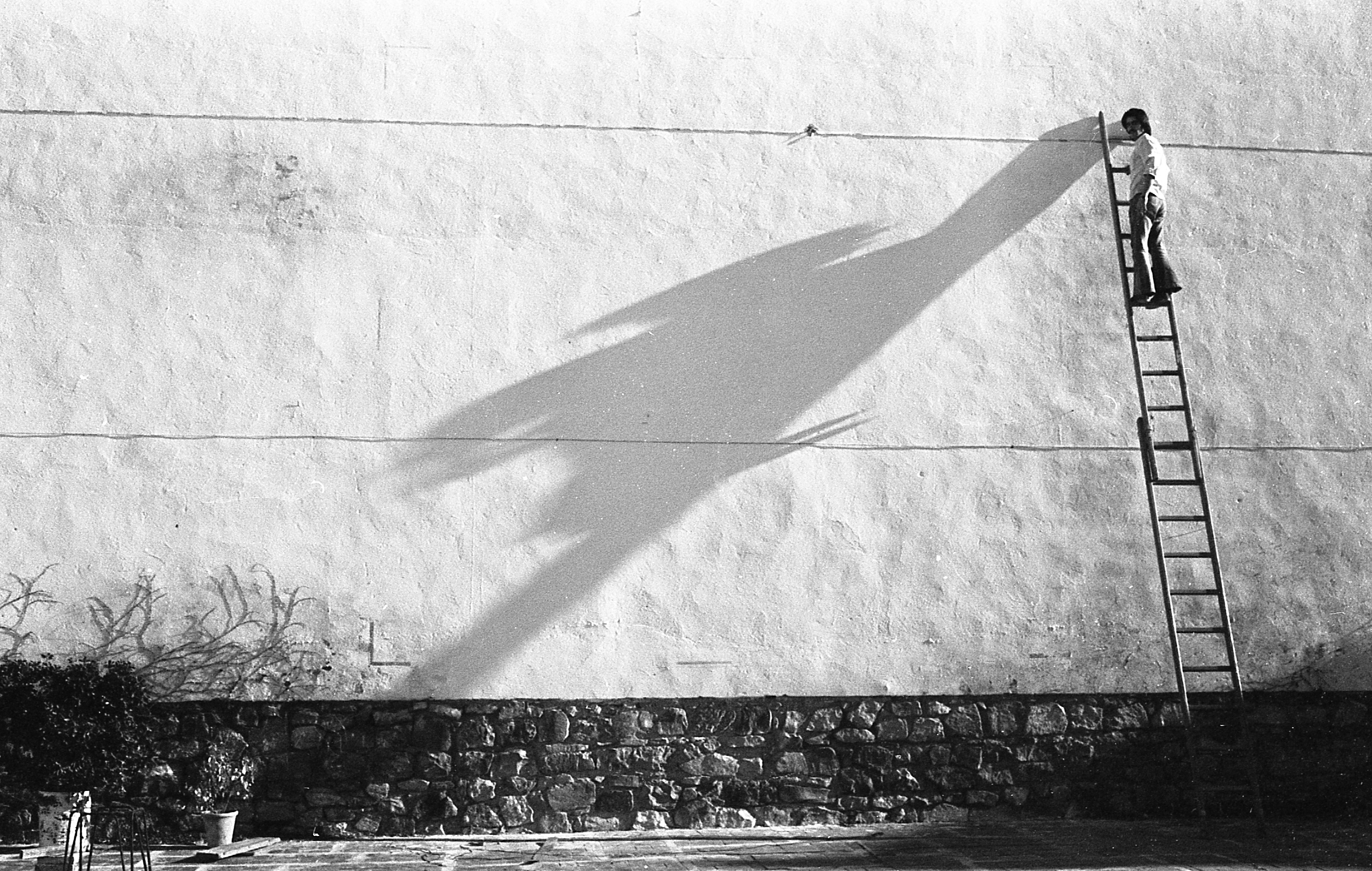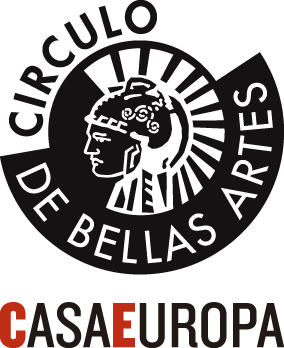Upcoming exhibitions in Madrid
June 4–September 28, 2025
Círculo de Bellas Artes—Casa Europa presents its upcoming season of exhibitions, inviting reflection on the climate crisis and life in society through the communal practices of indigenous societies, on disobedience and rebellion in artistic creation against authoritarianism, and on the reclamation of memory through image and experimental photography. Starting in June, Círculo de Bellas Artes will host the exhibition Somos raíces by Santiago Yahuarcani and Nereyda López, along with the solo shows by Lotty Rosenfeld and Nacho Criado as part of the official program of the PHotoESPAÑA 2025 Festival.
Santiago Yahuarcani and Nereyda López: Somos raíces
June 13–September 14, 2025
Curated by Isabella Lenzi and Rember Yahuarcani
Somos raíces [We Are Roots] invites us to explore the universe of Santiago Yahuarcani, a self-taught painter and sculptor from the Garza Blanca clan of the Uitoto nation, and Nereyda López, a self-taught sculptor of Tikuna and Cocama ancestry. Both live in Pebas, on the banks of the Ampiyacú River in the Amazon region of Loreto, Peru.
Curated by Isabella Lenzi and Rember Yahuarcani, the exhibition offers a journey through indigenous cosmogonies based on orality, song, vision, practice, and communal resistance. Their artistic proposal advocates for harmony between humans, non-humans, and nature. Through their paintings and sculptures, they reinterpret the myths and spiritual world of their ancestors, bringing them into the present. At the same time, they narrate centuries of extractivism and violence, particularly focusing on the rubber boom, which deeply affected Amazonian communities and also marked their personal biography. Their artworks challenge colonial narratives, aiming to create a space for the recognition and visibility of these voices.
Santiago Yahuarcani and Nereyda López are among the most relevant figures in contemporary art, with their work engaging in urgent debates around memory, ecology, and decoloniality. Santiago participated in the 2024 Venice Biennale and, together with Nereyda, was part of the 2024 Toronto Biennale and the 2025 Mercosur Biennale. This is the first exhibition dedicated exclusively to both artists outside of Peru. It features a significant selection of artworks, from early pieces made in the early 2000s, previously unseen outside their home country, to recent creations made specifically for this show.
Santiago primarily paints with natural dyes on llanchama, a plant fiber extracted from the bark of the renaco tree, an Amazonian tree that grows in his territory. Nereyda, on the other hand, builds her sculptures and masks using seeds, roots, fibers, and bark, collected with patience and respect for her surroundings. From their home-studio, they have woven a way of life where art intertwines with cultivation, daily care, dreams, and the transmission of ancestral knowledge. In their family, creation follows a collective dynamic, not an individual one, and until recently, did not involve the assertion of authorship. It arises from shared work, respect for inherited knowledge, and the commitment to pass it on to those who come after. Each work is born from the exchange between generations, from the youngest to the eldest, in a process where art is a living memory, a community bond, and a daily act of resistance.
Somos raíces invites us to reflect on other ways of living in society, on the disobedience and irreverence of artistic creation in the face of violence, and reclaims myth and memory as living forces that help us to confront current challenges, while accounting for a history of positioning against the dispossession and silencing of indigenous peoples in the Amazon. In a historical moment of ecological, social, and political crisis, the exhibition asserts a vision of art as a tool for resistance, connection, and reimagining the world.
The exhibition is part of the Círculo de Bellas Artes' program dedicated to the climate emergency and includes a catalog with texts by the curators and the artists, as well as myths from the Uitoto-Aimenɨ nation, previously unpublished outside of Peru.
This exhibition is supported by the Fundación Biodiversidad of the Ministry for Ecological Transition and the Demographic Challenge of Spain, Galería Crisis, and the Embassy of Peru in Spain.
Lotty Rosenfeld: By Pass. La frontera del signo
PHotoESPAÑA
June 4–September 7, 2025
Curated by Marta Dahó and Alejandra Coz
Círculo de Bellas Artes returns to the Official Section of the PHotoESPAÑA Festival in 2025 with an edition that, under the motto "After all," celebrates the power of photography as a tool of dissidence, resistance, and change. The Festival explores the historical evolution of this practice and its relevance to social, political, historical, and cultural environments, from its documentary dimension to its ability to imagine other possible worlds in times of uncertainty.
In this context, the exhibition By Pass. La frontera del signo [By Pass. The Border of the Sign] presents the work of Lotty Rosenfeld (Santiago, Chile, 1943–2020), a key figure in Latin American video art. Her practice, undefinable, lies at the intersection of active political militancy against state violence and the conception of images as spaces of necessary freedom to transform the present. During the years of dictatorship, when the streets were forbidden to public manifestation and film or photographic recording was prohibited, her work emerged as a series of interventions in public space that defied the silencing imposed by the political-military power. At the same time, these actions invited the community to imagine other forms of collective participation.
Curated by Marta Dahó and Alejandra Coz, this project traces the first gestures of the artist, which marked the subsequent development of a body of work that continued to interrogate the most conflictive aspects of neoliberal policies. The exhibition focuses on one of the vital cores of her practice: the act of positioning herself with her body where her presence was not expected. More specifically, her ability to point out those signs whose power to organize the economy of life had been naturalized to the point of becoming invisible to questioning. From these points—chosen with surgical precision—Rosenfeld intervened, generating, through her actions and the movement of her images, waves of interference whose repercussions were, and remain, fundamental.
In this sense, her audiovisual work—marked by a radical intersection of materials, languages, and archives—functions as a true bypass: an alternative route where life and its imagining forces have been blocked.
The exhibition is organized by Círculo de Bellas Artes, PHotoESPAÑA, and the Ministry of Cultures, Arts, and Heritage of the State of Chile, in collaboration with the Fundación Lotty Rosenfeld.
Nacho Criado: Blanco
PHotoESPAÑA
June 4–September 28, 2025
Curated by César Borja
Nacho Criado (Mengíbar, Jaén, 1943–Madrid, 2010) is one of the most significant and influential figures in contemporary Spanish art, awarded the Premio Nacional de Artes Plásticas in 2009. His work developed in tune with the experimental practices that emerged in the final years of the Franco dictatorship, whose most emblematic manifestation was the 1972 Pamplona Encounters. Although generally associated with conceptual art, his trajectory spans the echoes of minimalism, land art, arte povera, and performative processes. Criado’s work escapes all labels, positioning itself in the continuous flow between idea and its staging.
The exhibition Blanco [White], produced within the framework of the PHotoESPAÑA Festival, articulates a series of events that transcend the traditional concept of photography. It consists of multiple artworks created in the first half of the 1970s, focused on the relationship between language, action, and representation. In this phase, Criado intensively used photography as a field of formal and conceptual experimentation, integrating it into the poetics of his installations. Through its economy of means, these works allowed him to translate ideas into images, while also serving as archaeological memory of his artistic process.
The title of the exhibition refers to the eponymous piece Blanco, originally presented in 1974 at the German Institute in Madrid. This piece reveals the essence of the photographic process through a continuous play of opposites: it establishes a double visual narrative between positive and negative, questioning the limits of language beyond the intrinsic meaning of the word.
The exhibition, curated by César Borja, is organized by Círculo de Bellas Artes and PHotoESPAÑA. It also features a museographic design by Marta Rodríguez Luxan and collaboration from Gonzalo Criado and Soledad García.
